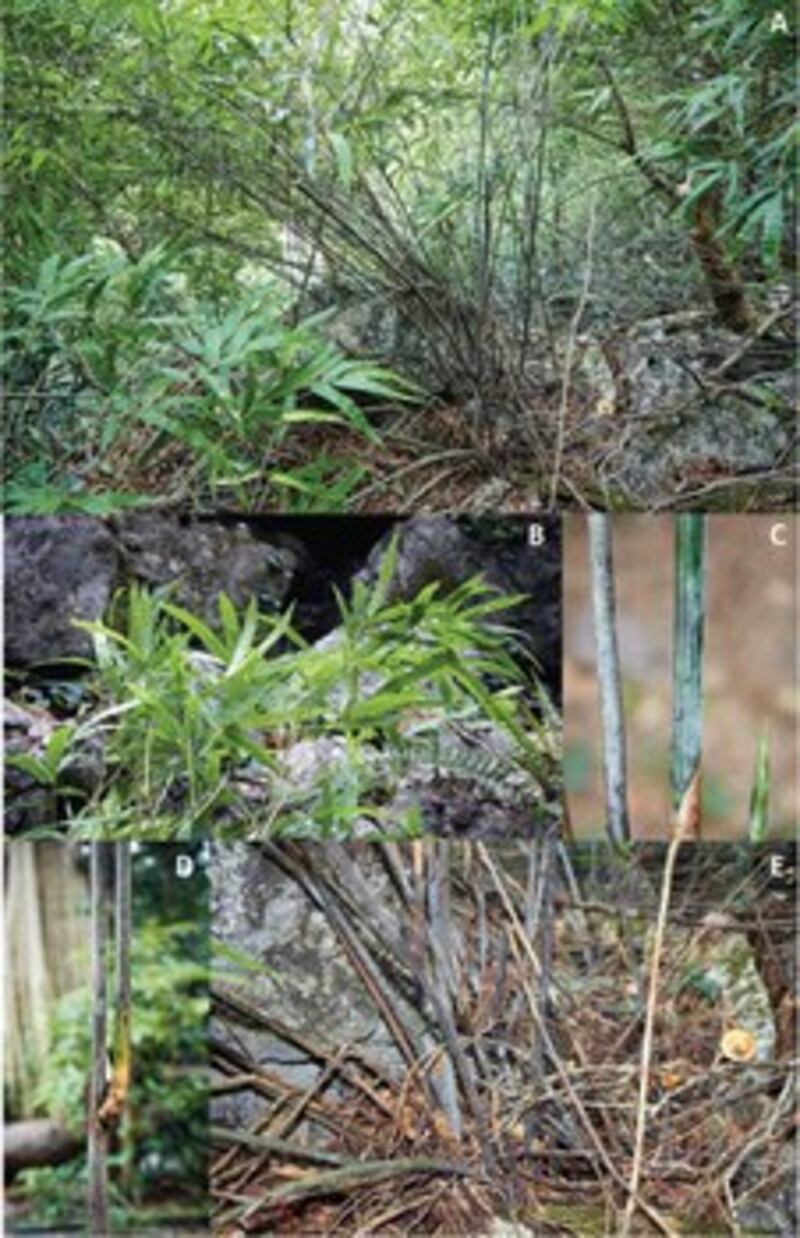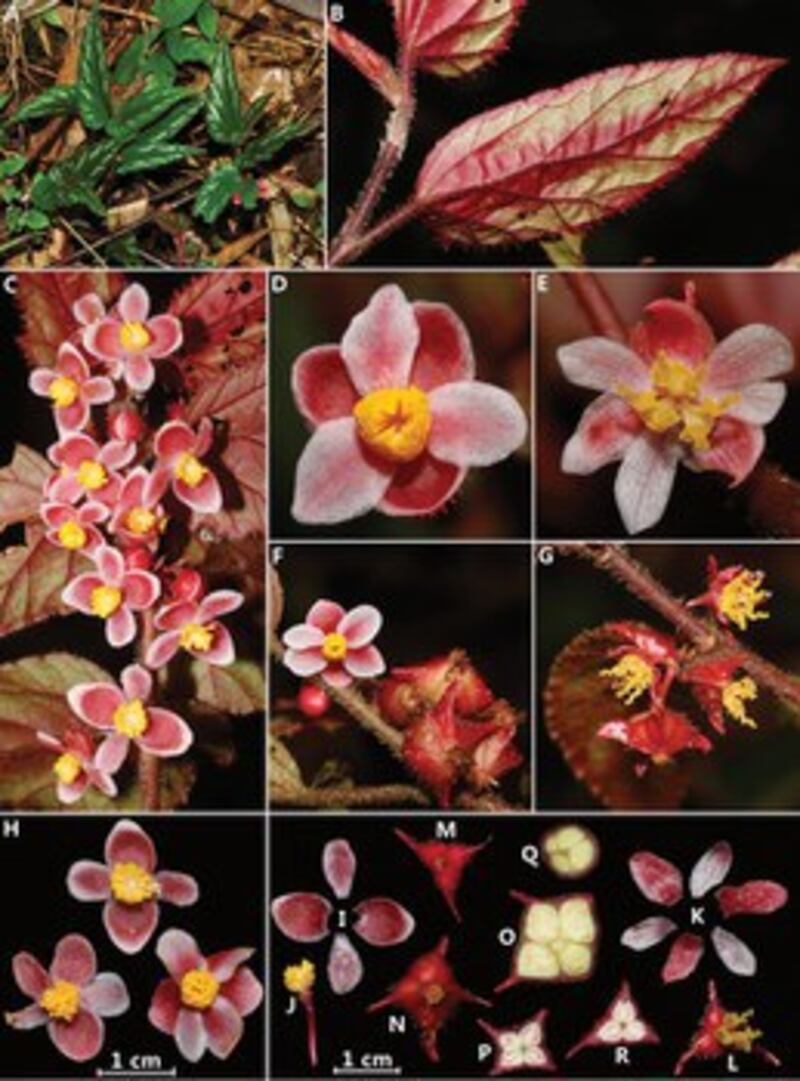A new langur monkey named after an extinct volcano, the world’s first drought-resilient succulent bamboo and an iridescent snake with odd, non-overlapping scales are among an extraordinary 224 species discovered in the Greater Mekong region recently, researchers say.
Hundreds of scientists from across the globe discovered 155 plants, 16 fish, 17 amphibians, 35 reptiles and one mammal in Cambodia, Laos, Myanmar, Thailand and Vietnam, according to a report published last week by the World Wildlife Fund for Nature ( WWF).
The discoveries have thrilled other researchers.
“It is always a good thing to discover new living creatures. … Every animal promotes ecosystem diversity and a wealth of knowledge to the academic world, especially to scientists and biologists,” Punya Kaesawat, a researcher at the faculty of sciences at Burapha University in Thailand, told BenarNews on Monday.
“It is believed that new findings of these species will follow.”
The habitats of more than 200 species in the Greater Mekong are at risk of being damaged by humans or climate change, he said.
“They may directly impact these sensitive new species,” he said, adding that illegal exotic markets could be interested in the new species.
According to a 2011 study, there are about 8.7 million species on Earth while only 1.6 million have been identified, meaning that more than 80 percent of species have yet to be discovered.
“The Greater Mekong region is one of planet Earth’s most important biodiversity hotspots, highlighted by the endless number of new species discovered there every year,” professor Thomas Ziegler, curator at the Cologne Zoological Garden in Germany, said in the report’s foreword.
More than 3,000 new species have been found in the Greater Mekong since 1997, according to the report.
The new “discoveries, painstakingly identified and recorded by keen naturalists and taxonomists ... demonstrate that the region is still a frontline for scientific exploration and a hotspot of species diversity,” WWF said in the report.
“Many species go extinct before they are even discovered, driven by habitat destruction, diseases spread by human activities, predation, competition brought by invasive species and the devastating impacts of illegal and unsustainable wildlife trade.”
Ziegler noted the extreme threats faced by these species, saying that “to record this treasure trove of biodiversity before it is completely lost, we must accelerate our work and strengthen international cooperation.”
Here are some of the discovered species:
CAMBODIA

Leptobrachella neangi (amphibian)
It took 10 years to identify the leaf-litter frog as a new species because of its similarity to a previously identified species. In 2010, Cambodian herpetologist Thy Neang collected two adult female species in the Cardamom Mountains at Phnom Samkos Wildlife Sanctuary – DNA testing in 2020 determined the frogs were new species.

Cyrtodactylus phnomchiensis (reptile)
The yellow-spotted bent-toed gecko has a unique elongated body and snout compared to other species in its group, according to WWF. Researchers discovered it in the isolated rocky mountain region of Phnom Chi in the Prey Lang Wildlife Sanctuary, one of the most extensive lowland evergreen forests in mainland Southeast Asia and home to more than 55 threatened wildlife species.
LAOS

Laobambos calcareus (plant)
Discovered in Khammouane province in Laos, this is the first documented case of succulence in bamboos, which means its stem can inflate and deflate depending on the quantity of water stored during the dry or wet seasons. Researchers saw it in the dry season when it looked deflated and wrinkly, but during the rainy season, the plant looked inflated and “bamboo-ey.”

Pareas geminatus (reptile)
WWF said researchers found this new medium-sized slug snake during field studies in the Golden Triangle where the borders of Laos, Myanmar and Thailand meet. It has a yellow-brown color and unique patterning with the stripes behind the eyes merging to form a black collar.
“This very cute and unique snake was initially difficult to classify, given its morphological similarity to another species and past confusion about taxonomy,” said Tan Van Nguyen of Save Vietnam’s Wildlife, who led the research team.
MYANMAR

Begonia chenii (plant)
The perennial reddish flowers and berry-like fruit discovered in Putao district, Kachin State, is named after professor Chen Jin, director of the Southeast Asia Biodiversity Research Institute at the Chinese Academy of Sciences. It was found in a tropical forest in Kachin, an area known to be one of the most diverse floristic regions in continental Asia.

Trachypithecus popa (mammal)
This Popa langur monkey was identified in a 100-year-old museum specimen from the United Kingdom’s Natural History Museum and was later matched with more recently collected bones from central Myanmar. It is named after the extinct volcano Mount Popa, home to the largest population of this species of about 100 individuals. The International Union for Conservation of Nature (IUCN) has proposed that it be listed as Critically Endangered.
THAILAND

Cnemaspis selenolagus (reptile)
Thailand’s San Phueng rock gecko – Cnemaspis selenolagus – resembles a half-finished paint job. It has a yellow-orange upper body and is grey from the middle to its tail. The color helps it to camouflage against the lichen and dry moss on rocks and trees where it spends its days.

Tylototriton phukhaensis (amphibian)
An orange-brown knobby newt with devil horns and a racing stripe was observed by chance in a 20-year-old travel magazine, which sparked researchers’ interest to see if it still existed. It was discovered thriving in Doi Phu Kha National Park with more than 50 swimming in a swamp covered with vegetation and big rocks. Thailand’s Department of National Parks reported that this species likely is threatened by habitat degradation, deforestation and other human activities.

This ginger family plant, which emits a pungent odor, was discovered in a plant shop in eastern Thailand. Previously undescribed, it is often used as a substitute for stink bugs, which are normally found in spring, as an ingredient in a popular chili paste served with sticky rice.
VIETNAM

Artocarpus montanus (plant)
This mulberry tree species found in the evergreen mountain forest of southern and central Vietnam was discovered in 70-year-old specimens at the Missouri Botanical Gardens. DNA analysis confirmed it as a new species in 2020. It is related to jackfruit and breadfruit and is assessed as Near Threatened by IUCN.

Leptobrachium lunatum (amphibian)
The big-headed spadefoot frog was discovered on the Kon Tum Plateau in the Central Highlands of Vietnam and northeastern Cambodia. It has deep orange irises shaped like crescent moons (hence the name lunatum or crescent moon).

Achalinus zugorum (reptile)
The odd-scaled snake was discovered curled up on a small gravel road in Lung Cang Village, Ha Giang Province, in 2019. Only one specimen of this species has been collected.
Reported by BenarNews, an RFA-affiliated online news service.
